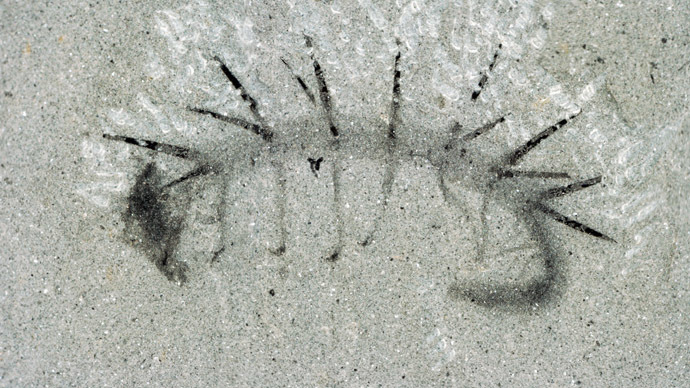Hallucigenia, not hallucination: Scientists created 3D model of 500-mln-year-old worm

Hallucigenia, a worm which inhabited oceans 500 million years ago, was discovered decades ago but there were a number of questions about its appearance and place in the tree of life. Finally scientists have put the pieces together.
A team of two researchers from Canada and Great Britain claims that they managed to understand how hallucigenia, a 500 million year worm, looked like. The study was published in “Nature” on Wednesday.
Hallucigenia had seven pairs of clawed legs, seven pairs of spines on the back over legs and six tentacles on the neck. Such strange appearance is actually a reason why this animal got a name “hallucigenia” – it really looks like a hallucination.
"When it was formally described originally, it was actually upside down, with the spikes being mistaken for legs and the legs being mistaken for tentacles on the back," Martin Smith of the University of Cambridge, one of the authors of the study, told the Washington Post. "Even once we got the right way up, there was a lot of uncertainty about which end was the head and which was the tail," he added.
Some scientists considered a bloated orb at one end of hallucigenia as a head but the new study revealed that this structure was just a result of animal’s decomposition. So, the head was at the other end of its body.
"We were very optimistic, we thought we might see a pair of eyes," Smith said. "But we didn't just see eyes. We saw a cheeky little grin, which was a complete surprise."
The scientists discovered that hallucigenia had a mouth with a ring of teeth which are thought to have been used for suction. This creature also had needle-like teeth in its throat which kept prey from sliding back out mid-slurp.
Last year the same team of researchers published another study
about hallucigenia where they placed this animal on the tree of
life. They found that its legs are similar to those of the velvet
worms, meaning that which means that hallucigenia is an ancient
member of the so-called Ecdysozoa group that embraces all molting
animals – from tiny waterbears to lobsters.
http://www.nature.com/nature/journal/vaop/ncurrent/carousel/nature14573-f3.jpg
The discovery of teeth, however, prompted new questions about the place of hallucigenia in a tree of life: modern velvet worms do not have them. The scientists explained that from their point of view the ultimate ancestor of all molting animals had teeth which were reduced during the evolution process.
"These teeth resemble those we see in many early moulting animals, suggesting that a tooth-lined throat was present in a common ancestor," said one of the study’s authors, Jean-Bernard Caron of the Royal Ontario Museum.
The team is going to continue their research on hallucigenia.












